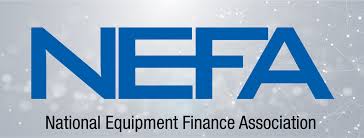How Business Owners Can Use Section 179 to Offset 2025 Taxes
9/30/20252 min read


Tax planning often feels like an after-the-fact scramble. Yet the most effective strategies come from decisions made before the year ends. For many business owners, one of the most powerful tools in the tax code is IRS Section 179. This provision allows you to deduct the full cost of qualifying equipment and certain software in the year you buy it—helping you reinvest in your business while lowering your taxable income.
What Section 179 Is and Why It Matters in 2025
Normally, when you purchase equipment, you have to spread the deduction over several years through depreciation. Section 179 changes that by letting you take a large upfront deduction in the year the equipment is placed in service.
For 2025, the limits are projected to remain strong:
Deduction limit: up to $1.22 million (subject to IRS confirmation)
Phase-out threshold: around $3.05 million in total equipment purchases
Applies to new or used equipment, as long as it’s new to you and used for business more than 50% of the time
By expensing the entire cost right away, you reduce taxable income for the same year—freeing up cash that can be reinvested in growth, hiring, or paying down debt.
Real-World Example
Imagine you own a construction company that needs a new excavator for $250,000. Without Section 179, you might depreciate it over five years, deducting roughly $50,000 each year.
With Section 179, you could deduct the full $250,000 in 2025, potentially lowering your taxable income by that amount and saving tens of thousands of dollars in federal income taxes.
Qualifying Purchases
Common eligible expenses include:
Heavy equipment and vehicles (with certain weight restrictions)
Manufacturing machinery and tools
Office furniture and fixtures
Computers, servers, and software that’s off-the-shelf and business-related
Certain improvements to non-residential property (like HVAC or security systems)
It’s crucial that the equipment be placed in service—not just ordered or paid for—by December 31, 2025.
Why Timing Matters
Many business owners wait until tax season to think about deductions, only to realize they missed the chance to make purchases in time. Planning ahead lets you:
Align equipment needs with cash flow and financing options
Avoid year-end delivery bottlenecks
Ensure documentation—purchase agreements, delivery receipts, and service records—are in order for your CPA
Financing and Cash Flow Flexibility
You don’t have to pay cash to claim the deduction. If you finance or lease the equipment, you can still take the full Section 179 deduction in 2025, as long as it’s in use by year-end. This makes it an attractive tool for businesses that want to conserve cash while still lowering their taxes.
A Few Cautions
The deduction can’t exceed your business income for the year—losses generally can’t be created with Section 179 alone.
Some states do not conform fully to the federal limits.
IRS rules change, so it’s best to confirm current thresholds with a tax professional.
Large purchases above the threshold phase-out limit may reduce your allowable deduction.
Key Takeaways for Business Owners
Plan purchases early—don’t wait until December to act.
Match investments to growth needs—choose equipment that drives revenue or efficiency.
Work with your CPA—run projections to see how Section 179 interacts with other deductions and credits.
Keep thorough records—proof of purchase and service dates are essential.
Bottom line: Section 179 isn’t just a tax break; it’s a cash-flow strategy. By accelerating deductions, you keep more money in the business today—where it can fuel growth tomorrow. Thoughtful planning in 2025 can turn tax law into an ally for your company’s expansion.




